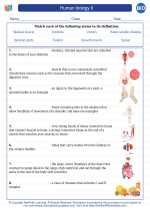Immune Function: An Overview
The immune system is a complex network of cells, tissues, and organs that work together to defend the body against pathogens such as bacteria, viruses, parasites, and fungi. The primary function of the immune system is to recognize and eliminate foreign invaders while also recognizing and neutralizing abnormal cell growth, such as cancer cells.
Components of the Immune System
The immune system is comprised of two main types of immunity: innate immunity and adaptive immunity.
Innate Immunity
Innate immunity is the body's first line of defense against pathogens. It includes physical barriers such as the skin and mucous membranes, as well as cellular and molecular components like white blood cells (neutrophils, macrophages), natural killer (NK) cells, and the complement system. These components provide a rapid, non-specific response to a wide range of pathogens.
Adaptive Immunity
Adaptive immunity, also known as acquired immunity, is a more specific and targeted response to pathogens. It involves the activation of lymphocytes (T cells and B cells) that recognize and remember specific pathogens, allowing for a faster and stronger response upon subsequent exposure to the same pathogen. This type of immunity also includes the production of antibodies by B cells, which can neutralize pathogens and target them for destruction by other immune cells.
Immune Response
When the immune system encounters a foreign invader, it initiates a series of coordinated responses to eliminate the threat. This includes the following steps:
- Recognition: Immune cells recognize and distinguish between self and non-self (foreign) antigens.
- Activation: Upon recognition, immune cells become activated and initiate a cascade of responses to eliminate the pathogen.
- Effector Phase: Effector cells such as cytotoxic T cells and NK cells directly attack and eliminate infected or abnormal cells, while antibodies neutralize pathogens and promote their destruction.
- Regulation: The immune response is tightly regulated to prevent excessive inflammation and tissue damage, while also maintaining memory of the pathogen for future protection.
Disorders of the Immune System
Disorders of the immune system can lead to deficiencies (e.g., immunodeficiency disorders such as HIV/AIDS), overactivity (e.g., autoimmune diseases such as rheumatoid arthritis, lupus), or hypersensitivity reactions (e.g., allergies, anaphylaxis).
Study Guide
To study and understand immune function, consider the following key areas:
- Learn and differentiate between innate and adaptive immunity, including the components and mechanisms involved in each type of immunity.
- Understand the process of immune response, including the steps of recognition, activation, effector phase, and regulation.
- Explore the roles of specific immune cells, such as T cells, B cells, macrophages, and NK cells, in recognizing and eliminating pathogens.
- Examine the importance of antibody production and the role of antibodies in neutralizing pathogens and promoting their destruction.
- Investigate common disorders of the immune system, including immunodeficiency disorders, autoimmune diseases, and hypersensitivity reactions.
- Consider the impact of environmental factors, genetics, and lifestyle on immune function and overall health.
By mastering these key areas, you will gain a comprehensive understanding of immune function and its significance in maintaining overall health and well-being.
.◂Biology Worksheets and Study Guides High School. Human biology II
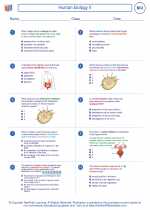
 Worksheet/Answer key
Worksheet/Answer key
 Worksheet/Answer key
Worksheet/Answer key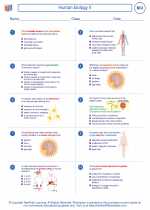
 Vocabulary/Answer key
Vocabulary/Answer key
 Vocabulary/Answer key
Vocabulary/Answer key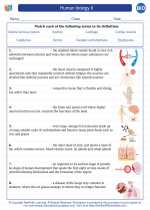
 Vocabulary/Answer key
Vocabulary/Answer key
 Vocabulary/Answer key
Vocabulary/Answer key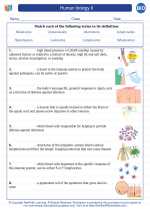
 Vocabulary/Answer key
Vocabulary/Answer key
 Vocabulary/Answer key
Vocabulary/Answer key
 Vocabulary/Answer key
Vocabulary/Answer key